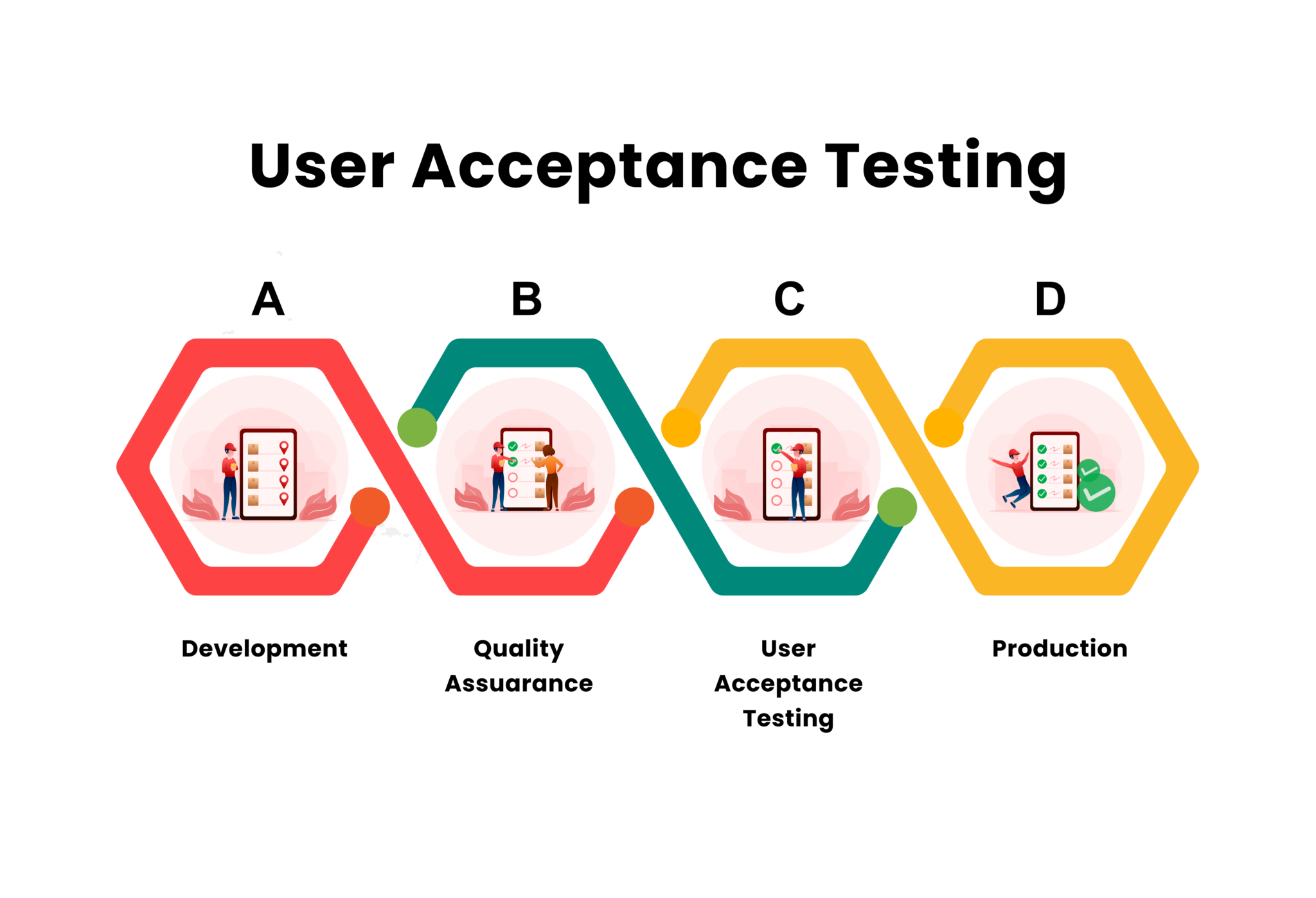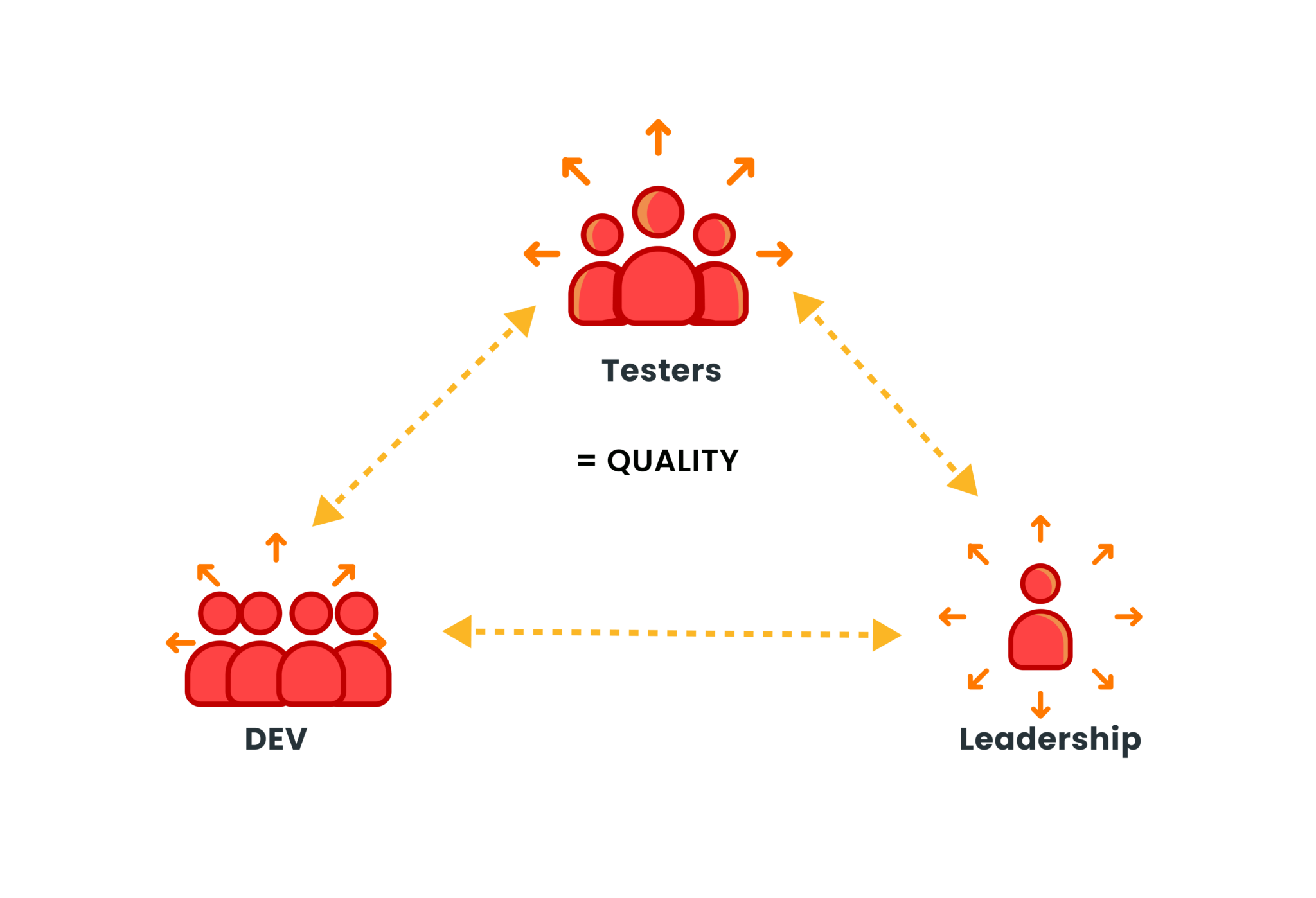The stage of user acceptance testing, commonly referred to as UAT, is an important turning point in the long software testing journey. This is because it confirms that the intended system impeccably fulfills the desires of its esteemed users. The mere notion that the UAT process is being executed by an actual representative user alludes to its paramount importance.
The conduct of user acceptance testing is an indispensable requirement for all software applications. And this is because it represents the ultimate phase in confirming the product’s quality, correctness, and compliance before its grand launch.
A victorious UAT procedure necessitates the cultivation of supreme expertise and testing protocols. It must also be coupled with the implementation of automation by esteemed QA teams and testers. It is anticipated that they will engage in a collaborative effort with the development team.
What is the importance of the UAT process?
User acceptance testing can be defined as a kind of black-box testing. This incredible procedure places paramount emphasis on the impeccable functionality and unparalleled usability of the application. However, in this context, technical details are not given a great deal of care.

The QA procedure and the STLC both come to a close with the UAT phase. It is most optimal to execute it promptly before the application’s launch and in a setting that replicates the actual production environment.
A subset of the users who will use the new application when it is launched regularly participates in user acceptability testing. In a nutshell, this group represents the people you want to reach.
The role of QA teams
In this day and age, every respected business must endeavor to provide refined products and services of the utmost caliber. The valued QA team is wholly dedicated to guaranteeing that the ultimate product exudes the highest quality and meets the most discerning market demands.
For determining a product’s or service’s level of quality, the QA team arranges review processes and offers the best testing methods.
An increasing number of highly regarded organizations have come to appreciate the significance of UAT. Therefore, they are implementing it with great devotion. Product managers, consumers, and clients may all benefit from this method of collecting suggestions.
This software testing methodology is employed to ensure that a product’s functionality, quality, scalability, and security meet and exceed user expectations. It also ensures that the tests yield the intended results.
What are the objectives of UAT?
- Performing quality assurance checks on the configuration of the system for user transactions and access.
- Checking back in on how things are going with system implementation.
- Providing evidence that performance has been verified in relation to essential business functions.
- Ensuring the integrity of converted data.
- Performing an assessment of the level of preparedness for signing off.

What is the rationale behind organizations seeking to capitalize on UAT?
It is of utmost importance to fully understand the rationale behind organizations’ motivation to employ this technique. In terms of quality assurance professionals, more than half of them think it is the same.
At Treinetic, we place great emphasis on UAT. Our valued team plays a pivotal role in bolstering the process to ensure reliable and punctual software delivery.
The importance of QA teams and UAT
When any organization makes an informed decision to adopt the QA function, a plethora of elements come into play, including:
- Cutting-edge tools
- A wealth of resources
- Stringent controls
All these are seamlessly integrated to enhance process efficiency to a level of unparalleled quality.
The incorporation of such components makes it possible to conduct a comprehensive analysis of the product. The system also undergoes a thorough evaluation, which is imperative for uncovering any imperfections and operational deficiencies. To produce a high-quality product, the QA team here develops comprehensive documentation that covers specific tools, processes, and practices.
The role of the QA manager
The primary duty of the QA manager is to meticulously oversee the advancement of product development. They also must expertly employ testing methodologies to rectify any issues pertaining to functionality and performance.

Through the implementation of the UAT methodology, enterprises can gain priceless insights from their esteemed clientele. Therefore, they can ascertain the precise specifications and requirements that are demanded of their products. Here, consumers also serve as a sounding board for your ideas and criticisms. Their feedback is used to make innovations work better and give users a better experience.
During user acceptance testing (UAT), the software is put through its paces in a real-world setting by the product owner or customers. And next, they offer helpful suggestions to the QA team. Following that, the QA team plans their efforts accordingly after considering the input.
How does the QA team effectively assist the UAT process?
The UAT technique places a strong emphasis on producing high-quality products and routinely seeking user feedback. The QA teams also must ensure the seamless execution of every method and strategy employed to enhance the ease-of-use of the product. By doing so, you can enhance the product’s overall quality.
To maximize the efficacy of the execution, QA teams should standardize the testing procedures that determine the result of UAT.
Testers must engage in a continuous process of refining product functionalities to enhance the user-friendliness of the final product. The implementation of diverse inspections and process checklists may boost the refinement of a premium product. It can also empower QA teams to enhance their operational procedures.

Wrapping up
Without a doubt, UAT stands as one of the most pivotal components of a QA initiative. It is abundantly evident that a team of seasoned QA professionals, equipped with the finest tools and equipment, is an absolute necessity to achieve the most rich results from this testing procedure.
It is of the utmost importance that you collaborate with competent software testing organizations that possess a wealth of knowledge and expertise in the realm of quality assurance procedures. Their offerings must include, but not be limited to, regression testing, user acceptance testing, and performance testing.

